

Discover more from Real Gaijin
World's Longest Public Road Test of a Self-Driving Vehicle Now Underway in Japan
The test features the Macnica EVO, an electric microbus that shuttles passengers between a bullet train station and 3 hot spring resorts in rural Japan.
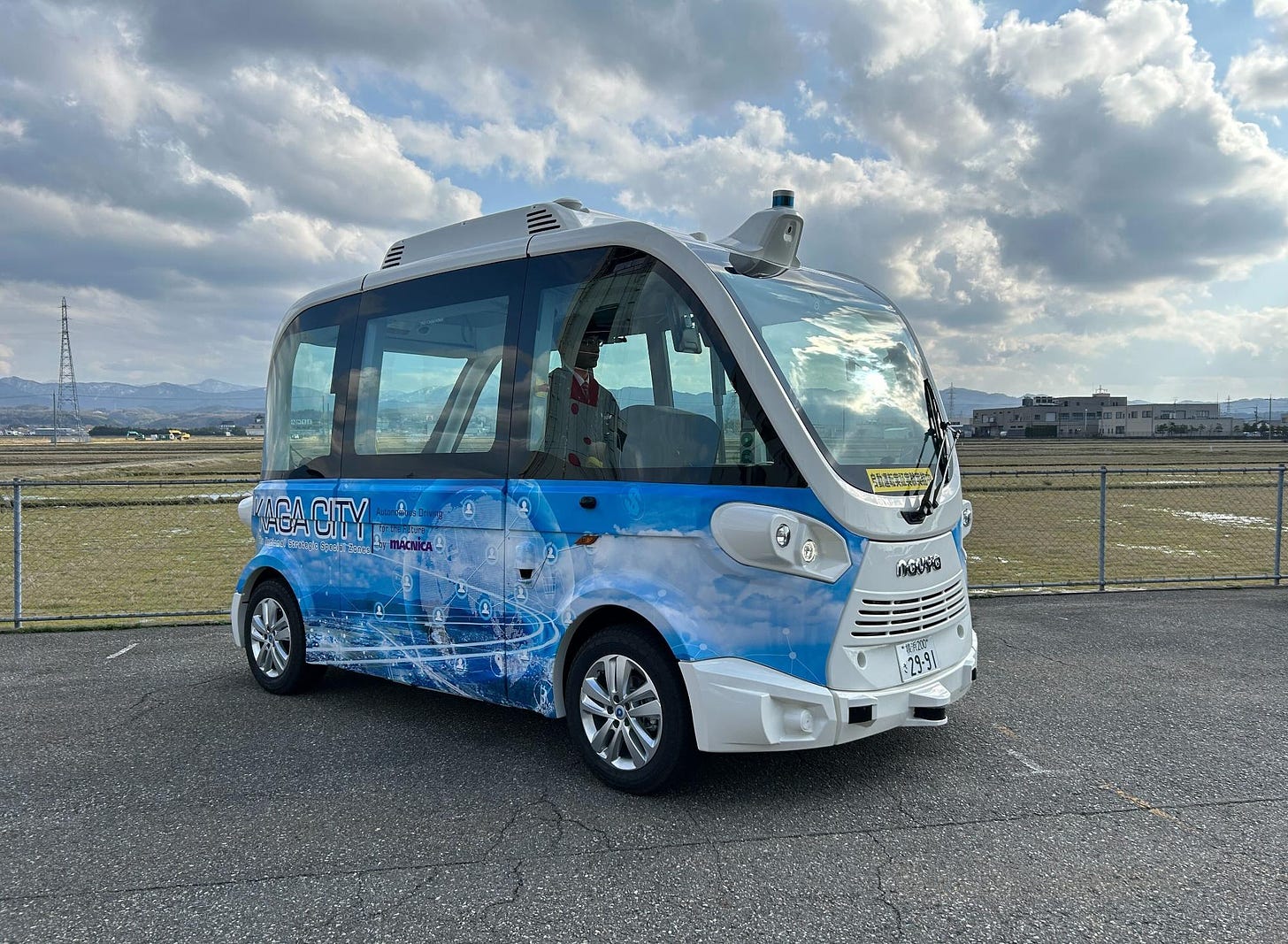
Listen to and/or watch the “Read My Lips Podcast Series” version.
What’s new: While robotaxis in San Francisco and other parts of the U.S. have been getting a lot of attention lately - including some unwanted scrutiny involving a few high-profile traffic accidents - the world's longest1 public road test of a self-driving vehicle quietly began on Wednesday, April 17, 2024, and will end next Tuesday near a stop on the Hokuriku bullet train line near the Sea of Japan using the Gaussin Macnica Mobility2 EVO, an electric vehicle (EV) microbus.
What’s happening: The EVO microbus will be used to verify the safety and effectiveness of an extended route between the newly opened Kaga Onsen3 bullet train station and the three hot spring resorts of Yamashiro Onsen, Yamanaka Onsen, and Katayamazu Onsen.
In February this year, the company successfully completed a similar public road test in Nanjo City, Okinawa Prefecture, to verify the secondary activity necessary to achieve Level 44 self-driving regulatory designation in the future, using an earlier model (ARMA) of an automated EV bus and roadside vehicle coordination. Cameras and sensors installed along the route were used to monitor the performance in real time, evaluate safety, and establish a system that provided the necessary notifications to allow the on-board observer to make decisions via remote control or switch to manual operation. That microbus was connected to Macnica's remote monitoring system called EverFleet to keep track of and manage the real-time operating status of the automated EV bus.
Go Deeper: To make autonomous driving a reality, it is necessary to remotely monitor people inside and outside the vehicle. In real-time EverFleet integrates and centrally visualizes vehicle data such as speed, steering, battery level, etc., in addition to location information and camera images from inside and outside the vehicle. It can also be linked to external data in coordination with traffic signals and other traffic infrastructure. In addition, the system can simultaneously manage a large number of mobility vehicles in multiple regions and automatically detect and report any anomalies during operation. This also helps to improve transportation profitability.
Why it matters: To date, there are no commercially available Level 3 or Level 4 self-driving vehicles due to ongoing development and safety concerns. However, the technology is evolving rapidly and, if successful, this week's test will mark an important milestone in the long-term development of self-driving technology. It will bring the world one step closer to Level 4 regulatory approval.
Particularly in Japan's sparsely populated rural areas, the successful deployment of this technology has the potential to provide reliable mobility options for both residents, many of whom are elderly, and visiting travelers. This week's special test in Ishikawa Prefecture in the Hokuriku region of Japan is part of a plan by the Kaga City government to become a "mobility optimized city that ensures freedom of movement for its citizens and visitors" and “to further promote the development of a data connection platform between mobility and other businesses, as well as realizing a smart city using next-generation mobility, including automated driving.”
From a commercial perspective, Macnica aims to prove its technology and further establish its first-mover advantage in Japan's demanding automotive market.
What they’re saying: While it will be interesting to see what riders from the general public think after the EVO tests conclude next week, the initial response from city officials has been positive.
"It felt faster than I imagined, and the ride was very comfortable." - Kaga City Mayor Riku Miyamoto, who took an early test drive a couple of days ago
Miyamoto has high hopes for the eventual application of this new technology in his hometown.
"The public transportation situation in Kaga City is serious. Therefore, it is essential to make the system autonomous. There are many problems to be solved, but I hope we can continue to experiment and move forward with the introduction of the system." - Mayor Miyamoto
Other mayors of small towns across the country, facing declining, elderly populations and with few resources to combat such problems, are undoubtedly watching Miyamoto's local experiment closely.
Based on the results of previous, similar tests in other parts of the country, these mayors have reason to be optimistic.
"This morning I had the opportunity to ride an automated bus in Sakaimachi, Ibaraki Prefecture! It was smart and cute, and I became very attached to it! This kind of bus will be an indispensable part of Japan's urban development in the future!" - Tweet from Satoko Ito, who participated in a similar test in early April 2024
By the numbers: This week’s 10 km (6.2 mile) round-trip course may not sound like much of a challenge, but as a real-world test of self-driving technology, it is a true marathon.
Mostly Autonomous: The test vehicle has no accelerator, brake pedals, or steering wheel. Sensors mounted on the front, rear, left, and right sides of the vehicle detect other moving objects and people. If the EV microbus stops in front of a traffic light or obstacle, the system automatically stops and the safety “operator / driver” uses a controller to start the vehicle and avoid the obstacle. According to Macnica, about 80% of the route is operated automatically.
Technical Specifications: The EVO, a microbus manufactured by Gaussin Macnica Mobility, can operate automatically for about 9 hours (100 km or approximately 62 miles) on a single charge. It is 4,780 mm (188 inches) long, 2,110 mm (83 inches) wide, and has an overall height of 2,670 mm (105 inches). It weighs 2,600 kg (2.87 tons).
Seating Capacity: The EVO microbus can accommodate up to 15 passengers (11 seated and 4 standing). During this week's test, only 10 people will be on board (8 passengers + 1 safety "operator / driver" + 1 security guard).
No Need for Speed: The EVO microbus has a top speed of only 25 kph (15.5 mph), but it will mostly be operated at only 18 kph (11.2 mph) during this week’s test.
Regulatory Designation: In terms of self-driving regulations, it is officially approved as "Level 4 Compliant," but the EVO microbus will only be operated at Level 2 during this week's test. This means that the safety " operator / driver" will take over in case of an emergency.
How it works: The Macnica EVO microbus relies on several new technologies to navigate its way up and down the hills of the Japanese countryside. LiDAR, short for Light Detection and Ranging, plays a critical role in self-driving car technology by acting as an extremely precise eye for the vehicle. It emits rapid pulses of laser light that bounce off objects in the environment. LiDAR then measures the time it takes for each pulse to bounce back. By combining all this distance information, LiDAR creates a highly detailed 3D map of the environment.
Another key word is GNSS, which stands for Global Navigation Satellite System. It acts like a digital compass and odometer, providing critical information for navigation. As good as GNSS is, though, it may not be precise enough for the centimeter-level accuracy required for some self-driving maneuvers. GNSS signals can also be weak or blocked by tall buildings or tunnels, making them unreliable in certain situations. For these reasons, GNSS is often used in conjunction with other sensors in self-driving cars. LiDAR, cameras, and inertial measurement units (IMUs) work together to compensate for GNSS deficiencies and provide a more robust understanding of the car's position and motion.
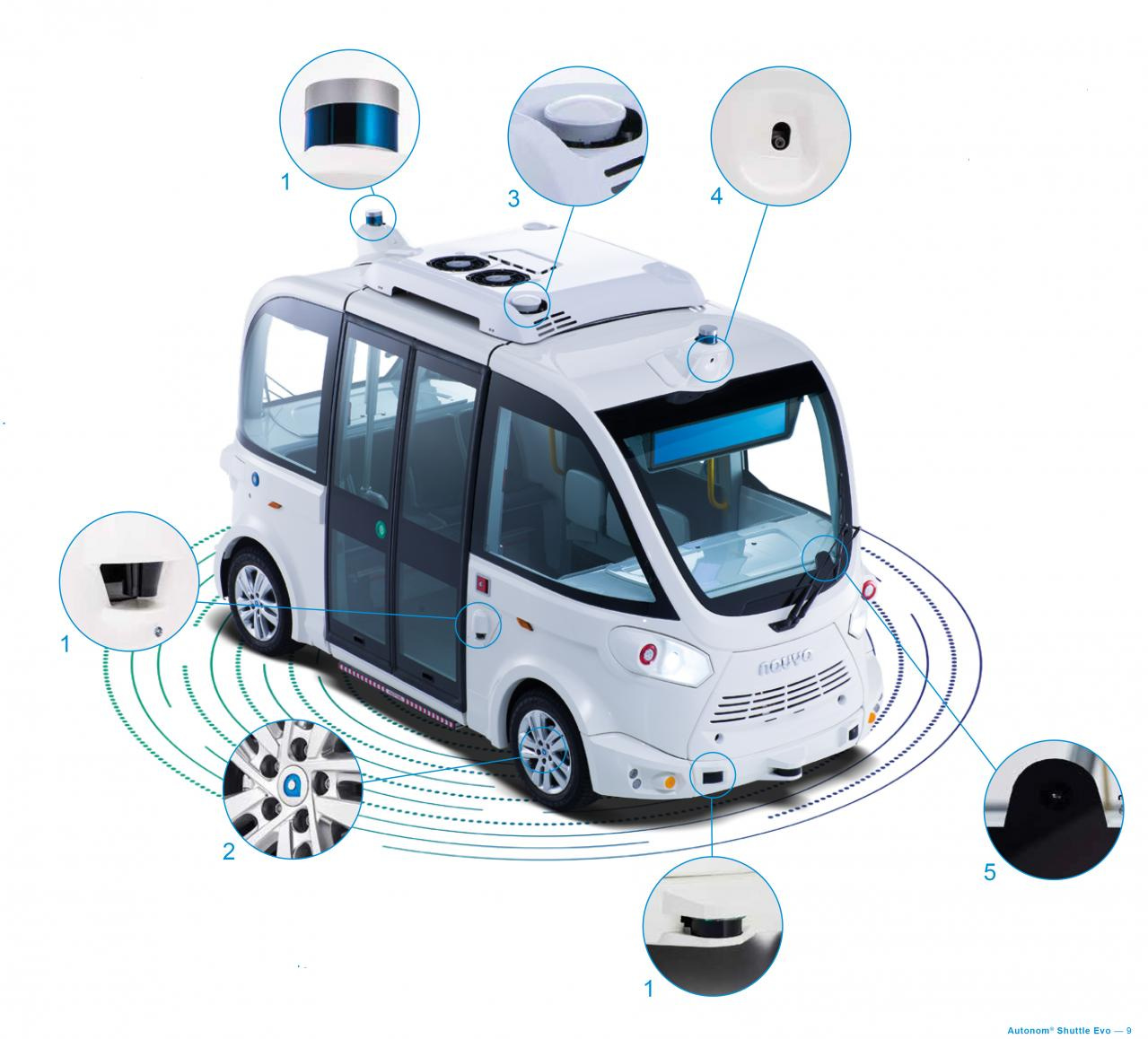
Commentary: As noted in a piece previously covered by Real Gaijin, it is no surprise that parts of rural Japan are being used as an ideal "laboratory" for testing fully automated driving technology. Please see "4-Color Traffic Lights Coming for Self-Driving Vehicles?" for more details.
I remain optimistic. In fact, I am counting on Macnica and other manufacturers in the self-driving space to prove the safety and effectiveness of this new technology so that it will be ready when I need it at some point in the distant future to get to the doctor's office or our local supermarket, for example. While I will probably be able to drive myself for another 30+ years or so - knock on wood - it is nice to know that there will, most likely, be multiple options for simply getting around town without having to rely on anyone. While I am really counting on safe, efficient, and relatively inexpensive robotaxis for door-to-door service, a Macnica microbus would also be fine.
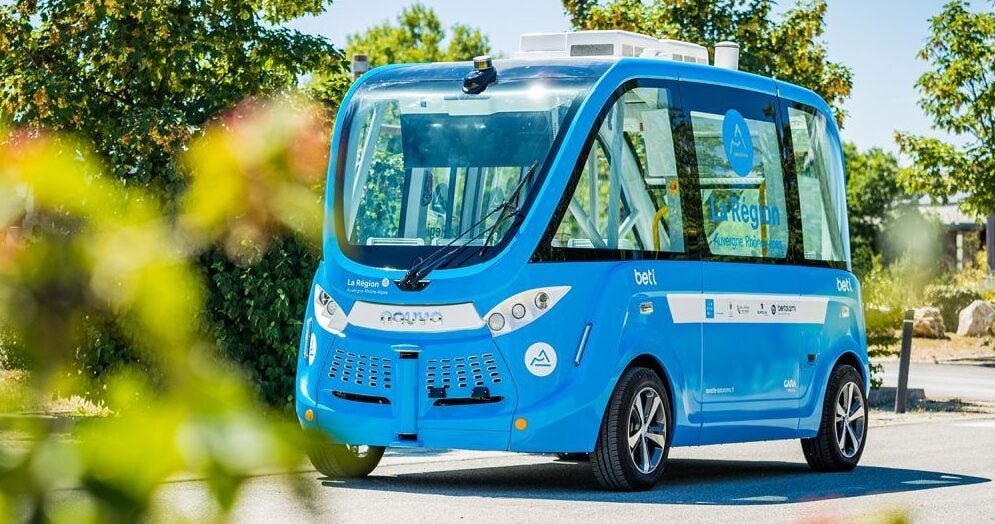
What’s next: There is no doubt that further technological advances will be needed to overcome regulatory hurdles and gain public acceptance. However, keep an eye on this space as technological developments are moving quickly.
Level 4 on the Horizon: While it is still anyone's guess how long it will take for Level 4 self-driving to be widely adopted, some automakers, such as Mercedes-Benz, have already gone on record saying they expect this new technology to be mainstream by 2030. Others say it could take longer, especially for regular passenger cars. As a result, Level 4 deployment via robotaxis and the kind of EV microbuses Macnica makes are likely to dominate the first wave of true Level 4 autonomous vehicles.
Bullish Sales Plans: Gaussin Macnica Mobility plans to sell more than 500 units worldwide over the next four years to establish leadership in the rapidly growing global market for Level 4 self-driving EV buses.
Movin’ on Up: While the microbus may be first out of the gate, it is only a matter of time before larger vehicles are equipped with the same type of self-driving technology. Gaussin Macnica Mobility is actively developing the BlueBus, a 35-seat product, in partnership with France's Bolloré Group, a major global player in transportation and logistics, communications, energy storage, and finance.
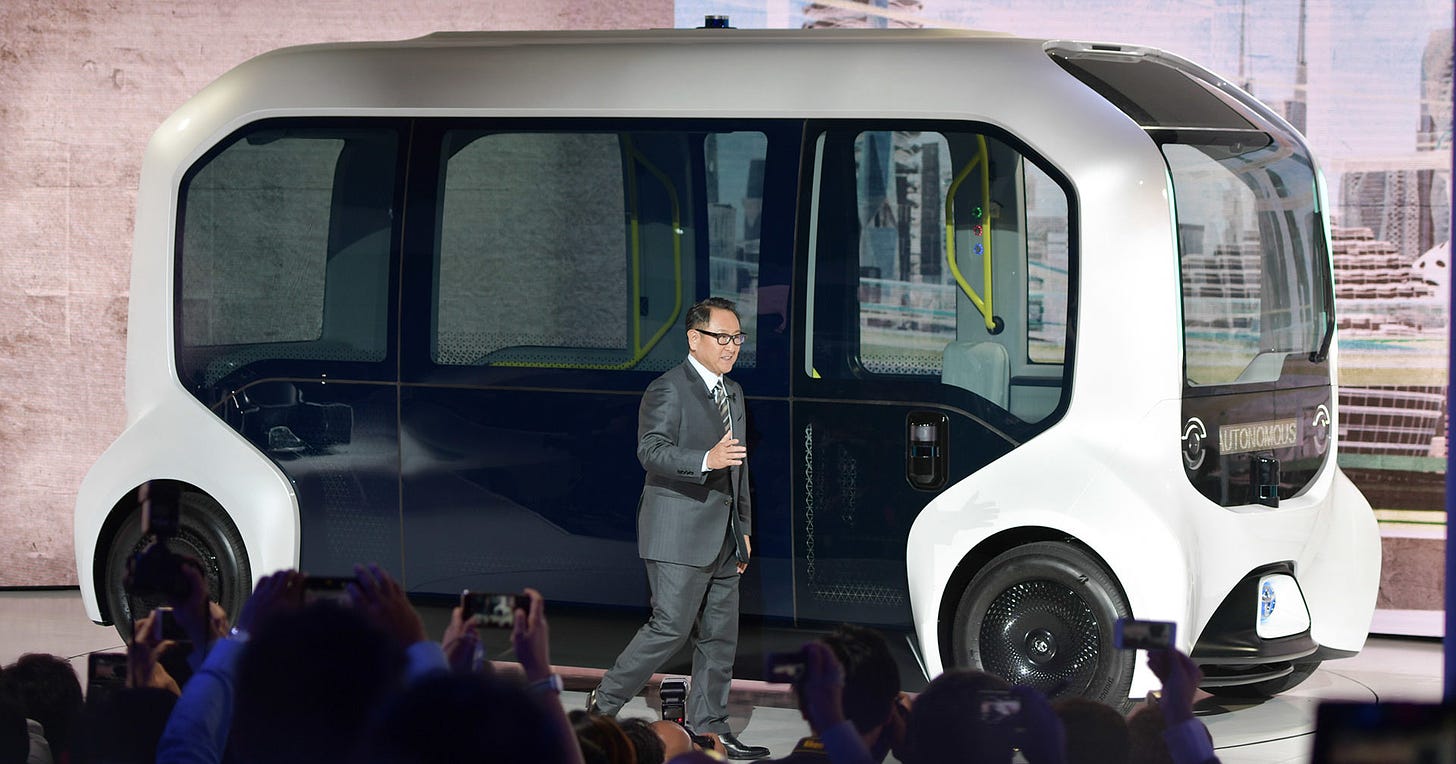
Domestic Rivalry: Domestic competition is a factor in Japan. Toyota Motor Corporation, the world's largest automaker, seems to be going at its own pace, not conspicuously competing in the development race. Although its track record in public road demonstrations is less impressive than that of its competitors, the group's overall development, technology, and service capabilities are still top-notch. Plus, demonstrations of the Toyota e-Palette EV self-driving microbus have gradually begun. The Toyota Research Institute (TRI) in the U.S. and Woven by Toyota in Japan are leading the Group's development of automated driving, and they are also focusing on the development of technology called AMP (Automatic Map Generation Platform) and other related technologies. The e-Pallet has forward-looking specifications, including the ability to be equipped with automated driving systems developed in-house as well as those from other manufacturers to increase redundancy. In addition, overseas companies such as Pony.ai, May Mobility, and Aurora Innovation, with whom Toyota has formed partnerships, are steadily advancing development and commercialization. It will be interesting to see how these leading startups develop and how Toyota will work with them to expand their businesses.
What do you think? What is your opinion about self-driving technology? All responses are completely anonymous, even to the author.
Links to Japanese Sources: https://prtimes.jp/main/html/rd/p/000000034.000014021.html, https://prtimes.jp/main/html/rd/p/000000037.000014021.html, https://www.kanto.meti.go.jp/seisaku/jidosha/data/20231214makunika.pdf, https://www.macnica.co.jp/public-relations/news/2023/143441/, https://jidounten-lab.com/u_36496, and https://www.chunichi.co.jp/article/885958.
#SelfDrivingVehicle #SelfDrivingCar #SelfDrivingBus #Level4 #GaussinMacnicaMobility #mobility #RemoteControl #ARMA #ElectricVehicle #EV #LiDAR #GNSS #ePalette #自動運転 #自動運転EVバス #自動運転バス #レベル4 #マクニカ #手動走行 #モビリティ #遠隔操作 #自動運転EVバスARMA #電気自動車 #自動運転EVバスEVO #イーパレット #ゴーサンマクニカモビリティ社
Please note that you can subscribe to Real Gaijin for free. If you are so inclined, you can also purchase an annual subscription for a relatively small fee.
However, I understand that even the lowest level of annual subscription allowed by Substack may seem too high for many. If you just want to buy a coffee for Real Gaijin (or maybe a green tea), you can also make a small donation here:
https://buymeacoffee.com/realgaijin
All levels of support - including just liking a particular article and/or leaving a comment - are very welcome. Thanks again for reading.
While Real Gaijin lives in Substack, you can also find Real Gaijin on a few other platforms (listed in alphabetical order).
https://www.instagram.com/real_gaijin_on_substack/
https://www.threads.net/@real_gaijin_on_substack
https://www.tiktok.com/@real.gaijin
https://www.youtube.com/@RealGaijin
https://www.linkedin.com/in/mark-kennedy-5b50b71/
10 km or 6. 2 mile round trip
Macnica is a Japanese company based in Yokohama, founded in 1972, which focuses on the import, export, sales, development and processing of electronic components such as semiconductors and integrated circuits. It has a joint venture partnership with France's Gaussin to develop zero-emission autonomous mobility. Gaussin is an engineering company that designs, assembles and markets innovative products and services in the field of transportation and logistics. Macnica recently acquired the assets of the French company Navya. Founded in 2014, Navya contributed 120 engineers with expertise in Level 4 automated driving software development, vehicle implementation, and operations. With its ARMA and EVO automated EV bus applications for urban and suburban areas, Navya has established itself as a market leader in the field of EV autonomous driving, with more than 200 units sold in 25 countries worldwide.
The Japanese term onsen (温泉) means hot spring.
Self-driving vehicle technology has been segmented by level. Currently, Level 2 (partial automation) vehicles are primarily what you might see around town or even behind the wheel of your own car. Level 2 self-driving vehicles offer driver assistance features such as adaptive cruise control and lane centering. However, the driver must constantly monitor the environment and be ready to take control. Level 3 (conditional automation) allows the vehicle to drive on its own under certain conditions, such as on highways or when there is good weather. However, when the system reaches its limits, it returns control to the driver, who must be alert and ready to take over within a short time frame (typically seconds). There are no commercially available Level 3 vehicles yet. Level 4 (high automation) has been defined as when the vehicle can handle most driving tasks within defined areas, often called geofences (specific highways or mapped city centers). If the system encounters an unexpected situation, it can attempt to safely stop itself without driver intervention. Passengers can potentially relax or even take their eyes off the road. Level 5 (full self-driving automation) requires no human intervention at all. The vehicle can handle any driving situation, anywhere, under any condition - just like a highly skilled human driver (or perhaps even better in some cases). This means that no steering wheels or pedals would be necessary. Level 5 is, however, still science fiction.
Subscribe to Real Gaijin
Unveiling the Real Japan: An American Expat's Inside Look | Hot takes, commentary, and unfiltered insights on life as a foreigner in Japan.






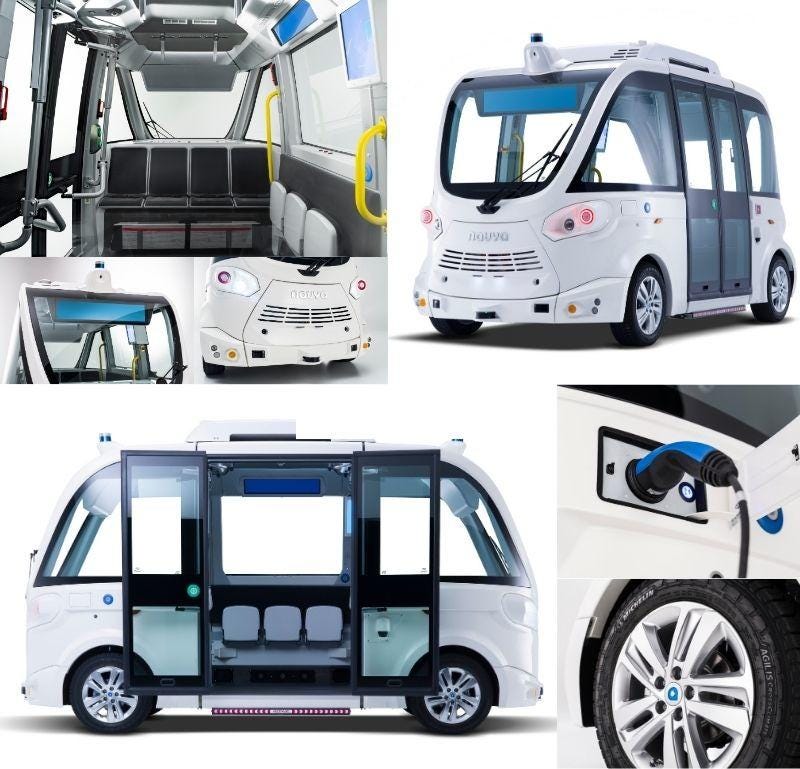
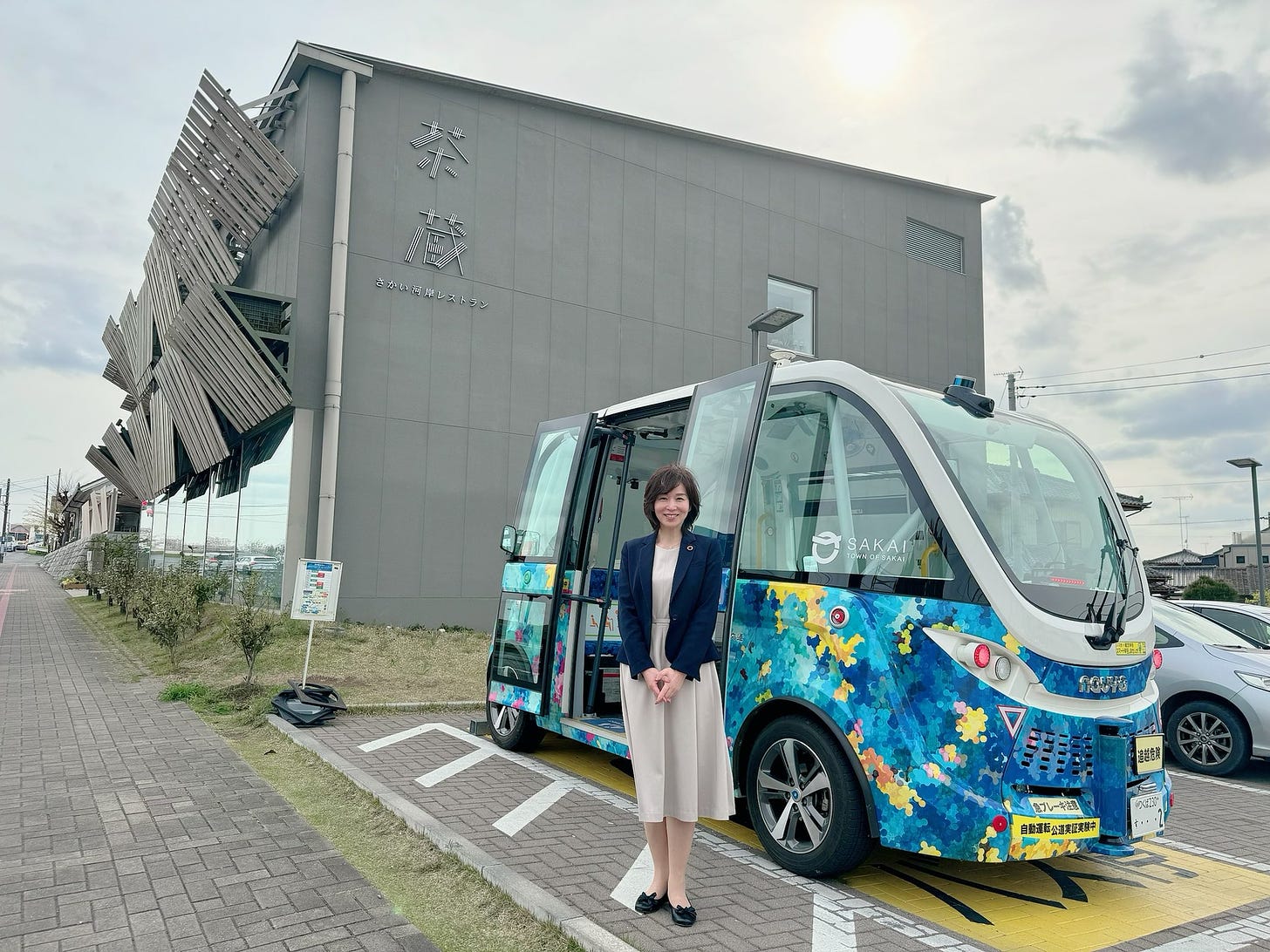
















While I can see the superficial attractions, I'm not sure what problems it solves, unless the intention is to provide public transport in places where none is currently provided (like where I live, for example). If these vehicles require an operator/driver, they are not going to help with the acute labor shortage, are they? This also feels to me like a technological camel's nose under the tent, rather like Elon Musk's Neuralink. Touted as a way to make the paralyzed walk, it's obvious that the endgame is transhumanism - which in my opinion is not a good thing. Similarly, so-called "autonomous" vehicles smack of the you-will-own-nothing-and-be-happy agenda of our rulers, more dumbing down of humanity, the machines taking over skills and abilities from humans.
Just a word of caution: https://stopworldcontrol.com/endhumanity/
(you're welcome!)